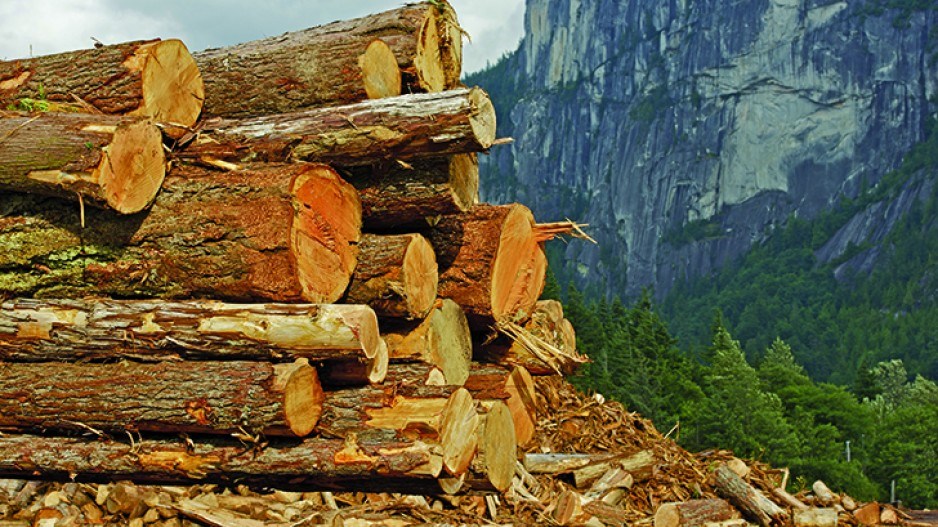Consumers may not like paying higher prices for some goods in stores but the Loonie’s recent fall is getting B.C.’s forestry sector poised for major growth in 2015.
Business Council of B.C. economist Ken Peacock said the recent decline in the Canadian dollar, which was sitting at 80.5 cents U.S. Thursday morning (February 5), makes exports south of the border even more enticing for Americans as U.S. housing starts grow.
A February 5 MNP report commissioned by a group of trade associations representing different regions in B.C. showed forestry generated $12.4 billion toward the province’s gross domestic product (GDP) in 2013 — the latest year full data was available.
“There was a long period through the stresses of the pine beetle infestation, through long-term market changes, the forestry was on — I think it’s safe to say — a declining trend,” said Resource Works executive director Stewart Muir, whose think tank endorsed the MNP study.
“But that has changed and now, out of all the sectors, it’s the one that has the best immediate prospects.”
He said the forestry industry’s deeper entry into Asian markets has also helped put it on the upswing.
While the study examined the economic output from 2013, when the Loonie was hovering between US$1 and 94 cents U.S., it did not show how well that year stacked up compared to previous years.
Data from B.C.’s Ministry of Finance showed the forestry industry hit a recent low point in 2009 when the sector’s exports amounted to just $7.6 billion. This coincided with the U.S. housing crash.
But as the world economy slowly recovered, exports rose to $9.1 billion in 2010, $10 billion in 2011 and $10.2 billion in 2012.
Since most of the province’s major legal, financial, insurance and real estate services firms are based in urban areas, Muir said any growth in the forestry industry would also have big economic impacts for Metro Vancouver.
In April 2014, Resource Works released a report using 2010 Statistics Canada data to show the Lower Mainland would receive 55.5% of added jobs if the province’s resource sector grew — hypothetically — by 10% in one year.
The MNP report also concluded economic output from the industry totalled $31.5 billion in 2013. The figure was divided evenly between direct and indirect output.
The report also said total employment generated from the industry was worth about 146,000 full-time equivalent (FTE) positions. About 64,000 FTEs were created directly through the sector, while 82,000 were created through connections to other industries.
“Keep in mind, though, the forestry sector doesn’t employ as many people as it used to, just because the mills are more high-tech,” Peacock said.
But he added the industry is still expected to see job growth this year, with some workers likely coming from Ontario to work in forestry.



